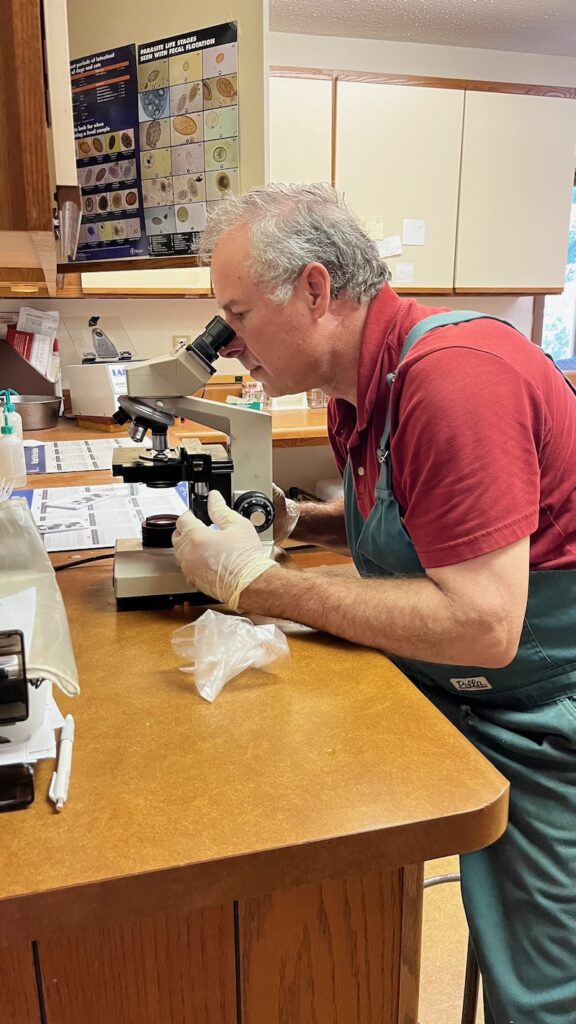Can you believe it is December? We have passed through another year with blogs. I have written about the different equipment used here to help us do our day to day business. For my final blog of 2022 I will talk about the microscope. This microscope was in veterinary school with Dr. Jim (I have mine at home on a shelf). This is the one piece of equipment a veterinary student must purchase to start at the College of Veterinary Medicine. Yes, this scope would be over 35 years old now. It is still a very important piece of equipment and with ongoing maintenance can last for many more years.
On a daily basis we use the microscope for analyzing stool samples looking for intestinal parasites. Once found we can then offer recommendations on what medications would be suitable for treatment. Often people buy over the counter dewormers, but never know if their pets had parasites or not. Plus, not all dewormers are successful for treatment of the different species of internal parasites.
We use the microscope to look for mites and lice after swabbing ears or scraping skin. The mites are quite detailed after looking at them under magnification. I often will bring the scope into the exam room to show clients what external parasites look like. Some are fascinated others…not so much.
Dr. Jim is using the scope to analyze bovine sperm in this photo. After he does the semen collection and the physical exam on the bull, he then places the specimen of semen under the scope to look at movement, shape, numbers, etc., of the sperm. The bull breeding soundness exam is critical to a cattleman’s herd. The news that a bull did not pass the exam is disappointing. Worse yet is a whole herd of heifers or cows that are open because someone neglected to do the bull’s breeding exam. No pregnancies, means a rancher just fed his cows/heifers for a full year with no profits. That would be hard to swallow but it has happened. A good breeding soundness exam can prevent this.
We use the microscope to look at urine sediment to help us determine cause of abnormal urination. We use the microscope to evaluate a blood smear. Laboratory results include many different tests to help put the puzzle together on why or what may be causing a pets health concerns. These are all screening tests to direct us in a manner that will help the patient get home as quickly as possible. That is where the pet and the owner want them to be.
Fine needle aspirate samples are evaluated under the microscope for certain cell types. A biopsy is by far a better form of diagnosis but sometimes we get lucky and will find cells that indicate cause of the health concerns. When these are found, we can begin formulating treatment while offering up a smaller biopsy if needed to verify our diagnosis. In some situations, time is important and so evaluation here at the clinic is important. Starting treatment as soon as possible would not be an option if we could not get the results on the same day.
We have also used the microscope to magnify ticks and fleas for identification. The different types of vectors can mean different diseases that we need to be concerned about. Ticks especially come in multiple shapes and sizes. Identification helps eliminate diseases, like Lyme disease, if it is not a deer tick.
As you can see this microscope has served us well over its lifetime. We would be lost without it and if this one ever breaks down… I still have mine on a shelf at home! We are so grateful for your business and confidence in our team at Winterset Veterinary Center. Merry Christmas and Happy New Year to all our clients and their critters.

